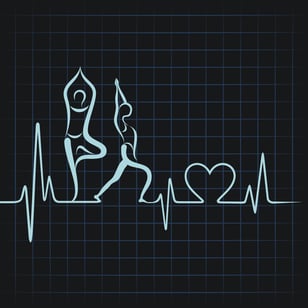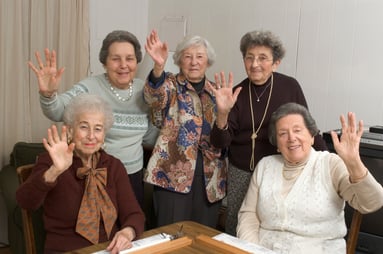Throughout 2015, we’ll be blogging about our dreams for corporate wellness, fitness, and aging well. Some of the content will represent a gentle “poking fun” at the industry, but it’s all written to stimulate thought about what really could be if we put our heads together and started mapping out what’s really possible in the realm of individual wellbeing. We hope you’ll join the conversation by commenting on the blogs, giving us additional ideas about which to write, and/or by finding us out on Twitter at #wellnesswhatif.
 Businesses need top performers in order to survive. We need sales staff who are heavy hitters, research staff who are actually rocket scientists, and customer service professionals who can turn any frown upside down. You know who those folks are in your organization, that top 5% of all performers. In some cases, they might be unsung heroes, but at a lot of businesses, the best among us are often publically lauded. They are the elite.
Businesses need top performers in order to survive. We need sales staff who are heavy hitters, research staff who are actually rocket scientists, and customer service professionals who can turn any frown upside down. You know who those folks are in your organization, that top 5% of all performers. In some cases, they might be unsung heroes, but at a lot of businesses, the best among us are often publically lauded. They are the elite.
Not everyone can fit into that narrow industry-specific definition of elite. But maybe, if business leaders opened their minds on what counts as elite, we could have more than one class of top-tier.
What if you didn’t have to exceed your sales quota to be considered among the elite at your worksite? Don’t get me wrong. You’d still have to work really hard. After all, becoming top tier is definitely hard work. Some would say rising to the top requires strength, agility, grace under stress.
According to a study, published in the American Journal of Preventive Medicine, researchers at the Pennington Biomedical Research Center found one way to get in the top 5% is to sweat. In their analysis of the American Time Use survey, they concluded that only one in 20 Americans engage in vigorous exercise (the kind that makes you sweat) on any given day.
That’s right, a paltry 5% of us are working hard enough when we workout to actually sweat.
What does this have to do with employee health?
The way to sustained weight loss is through a healthy diet combined with prolonged cardiovascular exercise (45-60 minutes) at least five days per week. Employers - if you want a workforce that is at a healthier body weight, you have to (among other things) create an environment that supports and provides opportunities for your employees to workout hard enough to sweat. You need to build a corporate health culture that supports breaking a sweat in your worksite fitness center or through another avenue of the employee’s choice.
Certainly, there’s more to individual well-being than being physically fit. But I wonder how many employees hold back on working out because of their environment (lack of access, lack of support). What if businesses publicly rewarded the exercising (aka sweaty) elite along-side the elite sales force?
Download our whitepaper for tips to incorporate exercise at your worksite wellness program.




 According to a study published in the
According to a study published in the  Sometimes I visit a community and they have a wellness director who is an RN with primary responsibilities for running the community’s outpatient clinic and helping residents navigate their health care needs. In other cases, I interact with an individual at the community level whose title is wellness director, but whose primary roles are focused on running the fitness program. Those two individuals have two very different focus areas, diverse areas of expertise, and they offer two entirely different value propositions for prospective residents. And neither of them paints a full picture of what community wellness can be.
Sometimes I visit a community and they have a wellness director who is an RN with primary responsibilities for running the community’s outpatient clinic and helping residents navigate their health care needs. In other cases, I interact with an individual at the community level whose title is wellness director, but whose primary roles are focused on running the fitness program. Those two individuals have two very different focus areas, diverse areas of expertise, and they offer two entirely different value propositions for prospective residents. And neither of them paints a full picture of what community wellness can be.
 When a business makes the commitment to put in a corporate fitness center, they are making a statement (hopefully one of many) about how important their employees’ health is. It’s a substantial investment, and the project is not to be taken lightly.
When a business makes the commitment to put in a corporate fitness center, they are making a statement (hopefully one of many) about how important their employees’ health is. It’s a substantial investment, and the project is not to be taken lightly. 
 If you work in fitness, you know that for some members, the only way to engage them in regular exercise is through a group class setting. Some people love the energy of a group effort, others like that they can blend in, and still other participants like group classes because of the ease of simply following real time instructions from a motivating teacher.
If you work in fitness, you know that for some members, the only way to engage them in regular exercise is through a group class setting. Some people love the energy of a group effort, others like that they can blend in, and still other participants like group classes because of the ease of simply following real time instructions from a motivating teacher. 
